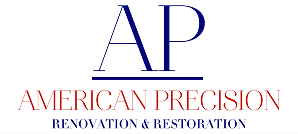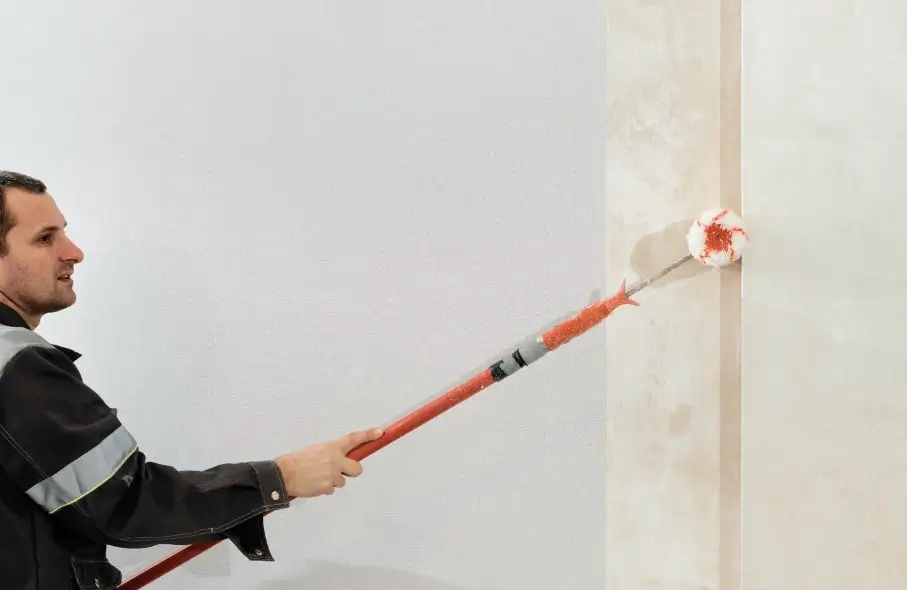Interior painting success depends heavily on thorough wall preparation before applying the first coat of paint. Professional painters spend more time preparing surfaces than actually painting them, and this attention to detail makes the difference between amateur and professional-looking results. Proper preparation ensures paint adheres correctly, covers evenly, and lasts longer.
Surface Assessment & Cleaning
Wall condition evaluation guides your interior painting preparation strategy. Different wall materials and existing finishes require specific preparation techniques. Drywall, plaster, wood, and previously painted surfaces each present different challenges that affect your preparation approach.
Existing paint assessment determines how much preparation work your interior painting project requires. Well-adhered paint in good condition needs minimal preparation beyond cleaning and light sanding. Peeling, cracking, or chalking paint requires removal before new paint application to ensure proper adhesion.
Wall cleaning removes dirt, grease, soap residue, and other contaminants that prevent paint from bonding properly to surfaces. Use mild detergent solutions for general cleaning, but stronger degreasers may be necessary in kitchens or other areas with heavy soil buildup. Allow walls to dry completely before proceeding with other preparation steps.
Smoke and stain removal requires special attention in interior painting preparation. Nicotine stains, water marks, crayon marks, and other discoloration can bleed through new paint if not properly sealed. Use appropriate cleaners and stain-blocking primers to prevent these problems from affecting your finished paint job.
Mold and mildew treatment must be completed before interior painting in affected areas. These biological contaminants can grow through paint films and cause health problems for occupants. Clean affected areas with appropriate antimicrobial solutions and address moisture sources to prevent recurrence.
Damage Repair & Patching
Hole and crack repair creates smooth surfaces that accept paint evenly and look professional when finished. Small nail holes can be filled with lightweight spackling compound, while larger holes require mesh patches or replacement drywall sections. Allow filler materials to dry completely before sanding.
Dent and gouge repair in drywall requires building up the damaged area in layers rather than attempting to fill deep damage in one application. Apply thin coats of joint compound, allowing each to dry before adding the next layer. Sand between coats to maintain smooth profiles.
Joint compound application techniques affect how well repairs blend with surrounding surfaces. Feather edges of patches beyond the damaged area to create gradual transitions. Sand repair areas smooth after drying, but avoid over-sanding that damages the surrounding wall surface.
Texture matching becomes necessary when repairing textured walls before interior painting. Different texture techniques require specific tools and materials to match existing patterns. Practice on scrap materials before attempting to match textures on visible wall areas.
Corner and edge repairs require special attention because these areas receive more wear and are highly visible. Use metal corner beads for outside corners that receive heavy traffic. Fill and sand inside corners carefully to create clean lines that won’t show brush marks or roller lines.
Sanding & Surface Smoothing
Sanding preparation creates smooth surfaces that accept paint evenly and produce professional-looking results. The amount of sanding required depends on existing surface conditions and the type of paint finish you plan to apply. Glossy surfaces require more aggressive sanding than flat or previously painted surfaces.
Grit selection affects sanding efficiency and surface preparation quality. Coarse grits remove material quickly but may leave scratches that show through paint. Fine grits create smooth surfaces but work slowly on heavy material removal. Progress through grits from coarse to fine for the best results.
Dust control during sanding protects both your health and surrounding areas from contamination. Use dust masks and ensure adequate ventilation when sanding. Plastic sheeting and tape protect furniture and belongings from dust that can settle throughout your home during preparation work.
Electric sanders speed up surface preparation for large areas but require careful technique to avoid gouging or over-sanding. Random orbital sanders work well for most interior painting preparation, while detail sanders handle corners and tight spaces. Hand sanding may be necessary for delicate surfaces or final smoothing.
Between-coat sanding improves adhesion and smoothness when applying multiple primer or paint coats. Light sanding with fine grit paper removes brush marks, dust nibs, and other surface imperfections that affect finish quality. This step is particularly important for high-gloss paint finishes.
Priming Strategies
Primer selection affects paint adhesion, coverage, and long-term performance. Different primer types work best for specific surface materials and paint systems. Using the wrong primer can cause paint to peel, discolor, or fail to provide adequate coverage over the substrate.
Stain-blocking primers prevent discoloration from bleeding through finish paint coats. These specialized primers work on water stains, smoke damage, marker marks, and other stubborn stains that regular primers cannot seal. Some stain-blockers also provide adhesion benefits for difficult surfaces.
Adhesion primers help paint bond to glossy surfaces, previously painted areas, and non-porous materials like tile or laminate. These primers create mechanical bonds that allow water-based paints to adhere to surfaces that would otherwise reject them. They are particularly important when changing from oil-based to water-based paint systems.
High-build primers fill minor surface imperfections while providing base coats for finish paints. These products work well on textured surfaces or walls with multiple small repairs that need leveling. They reduce the number of finish coats needed for full coverage and smooth appearance.
Application techniques for primer affect coverage and adhesion quality. Use appropriate tools for your primer type – brushes for cutting in edges, rollers for large areas, or sprayers for smooth finishes. Maintain wet edges and avoid over-working primers to prevent adhesion problems.
Tool Selection & Setup
Quality tools make interior painting preparation more efficient and produce better results. Professional-grade brushes, rollers, and other tools perform better and last longer than discount alternatives. Consider tool costs as investments in project quality rather than expenses to minimize.
Brush selection depends on the type of primer and paint you’re using, as well as the surfaces being painted. Natural bristle brushes work best with oil-based products, while synthetic brushes are designed for water-based materials. Angled brushes provide better control for cutting in around trim and edges.
Roller cover selection affects paint application and finish texture. Nap length should match surface texture – short naps for smooth surfaces, longer naps for textured walls. Quality roller covers hold more paint and distribute it more evenly than cheap alternatives that may leave lint or create uneven coverage.
Drop cloth protection prevents damage to floors and furniture during interior painting preparation and application. Canvas drop cloths provide better protection than plastic sheeting and are less slippery underfoot. Plastic sheeting works well for covering furniture but should be secured to prevent movement.
Tape selection and application create clean paint lines around trim, fixtures, and other areas where different colors meet. High-quality painter’s tape removes cleanly without damaging surfaces or leaving residue. Apply tape carefully and remove it while paint is still slightly wet for the sharpest lines.
Environmental Preparation
Room preparation creates safe, efficient work environments for interior painting projects. Proper setup reduces contamination, protects belongings, and allows painters to work efficiently without constant obstacles or cleanup requirements.
Furniture removal or protection prevents damage and provides clear access to all wall surfaces. Remove small items completely, move larger pieces to room centers, and cover everything with appropriate protection. This extra effort prevents accidents and allows better access for preparation work.
Fixture removal simplifies wall preparation and painting around outlets, switches, and light fixtures. Remove cover plates, cabinet hardware, and other removable items rather than trying to paint around them. This produces cleaner results and prevents paint buildup on fixture edges.
Ventilation setup helps paint and primer dry properly while protecting your health from fumes. Open windows when weather permits and use fans to circulate air throughout work areas. Some paint products require specific ventilation rates for proper curing and safe working conditions.
Temperature and humidity control affect how paint and primer perform during application and curing. Most paint products work best in temperatures between 65-75 degrees with moderate humidity levels. Extreme conditions can cause application problems and affect final appearance.
Thorough wall preparation sets the foundation for professional-looking interior painting results that last for years. Taking time to properly assess, clean, repair, and prime surfaces ensures your paint investment delivers maximum value and satisfaction.

